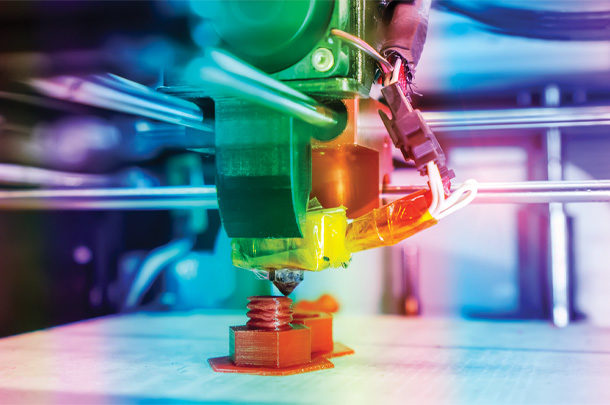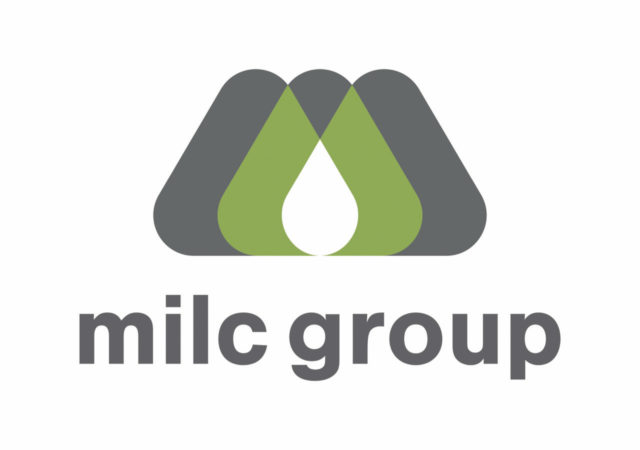Additive manufacturing and 3-D printing have been on the scene for a while now, and yet we keep finding new and exciting uses for it every year.
The production and availability of 3-D printers en masse has opened up new frontiers for the technology. Here’s why 3-D printing is the future across industries.
1. Democratizing production
The 3-D printing industry is projected to grow annually by 24% from 2021 onward. This proliferation in technology means more and more people will be able to get their hands on 3-D printers for prices that are a fraction of what they were a decade ago. Giving this powerful technology to the general population at scale could improve the quality of life of struggling and remote social groups.
Perhaps the best example of the benefit this might bring for unserviced groups is the incredible ability to 3-D print food. If oil and other cooking cartridges are produced at scale, people could save on food spending and literally print healthier and cheaper food right at home.
2. Healthcare
The humanitarian and healthcare applications ensure that 3-D printing will be relevant for a long time. Currently, the politicization of humanitarian crises and the danger posed by active fighting zones mean getting critical supplies delivered to groups that need it can be a challenging task. In practice, this might involve municipal authorities or even citizens printing and building their own health and sanitary infrastructure, like toilets.
On the medical front, rapid advances in additive manufacturing have given researchers the power to build increasingly complex devices, including an artificial heart. In the future, advancements in this field could enable patients to bypass years of waiting for vital organ transplants and cut down healthcare costs for the uninsured by multiple orders of magnitude.
3. Distribution
One of the first fields heavily impacted by advancements in 3-D printing was manufacturing. With market growth showing no signs of stopping, premium additive manufacturing material distributors have opened their doors to improve and simplify the acquisition of raw materials for manufacturers.
The creation of digital marketplaces where manufacturers can have materials delivered on demand has significant implications for the industry going forward. Easy access to raw materials means even smaller manufacturers will be able to attain scale quickly and skip the usual burden that comes with navigating the supply chain.
4. Speed
Gone are the times when you’d have to wait multiple days for a basic print to complete. While 3-D printing isn’t exactly fast in the way printing a document might be, higher-end printers have brought down production times noticeably. Technologies like metal injection molding allow businesses to produce prototypes and even meet bulk orders of finished products at a relatively rapid speed.
Looking to the future, newer tech like high-area rapid printing, or HARP, allows production of larger components all at once while retaining efficiency materials use. In 2019, researchers managed to overcome the usual 3-D printing compromise of producing bigger parts for speed by printing a human-sized object.
5. Greener production
Traditional manufacturing processes have left a lasting stain on the planet, one that continues growing despite a growing awareness of global emissions. Going forward, a more widespread use of 3-D printing can be a greener alternative to our current production methods that rely heavily on fossil fuel-based processes. Integrating this with applications like agriculture and foraging will be key to reducing methane emissions.
This potential is best shown by the conversion of carbon dioxide released by smokestacks at factories into concrete using 3-D printing. This procedure is called carbon upcycling and has already gone through some preliminary lab testing. That said, to take this aspect of 3-D printing outside the lab and make it ready for commercial use will require further advancements in affordability and scale.
6. Manufacturing
As more and more businesses follow the steps of giants like SpaceX and enter advanced sectors like aerospace manufacturing, the demand for complex components will only increase. Aerospace and other technical sectors require parts made with extreme precision, and 3-D printing can and is filling that gap.
Technologies let manufacturers use metal powders such as nickel super-alloy to produce durable components with additional properties like corrosion resistance.
The variety of metals available to producers is another bonus, as producers can pick and choose which metal powder to print with depending on their requirements. For example, if you need to make something lightweight, then aluminum powder is your best bet. If you’re looking for durability, then you’ve got titanium.
7. Complexity
Certain complex objects and technical components can take weeks, if not months, to craft, especially if they are to be made from special materials. 3-D printing jumps the hurdle of handcrafting by producing objects with complex geometry quickly and at the same price as through traditional manufacturing. In many cases, the cost of producing smaller complex items can even be smaller than it would have been if made with conventional methods.
The reason for this is: Technical components like precision sensors are often small, which means you do not need a large amount of raw material, even if your desired output has a complicated design.
8. Prototyping
Prototyping is an early model of what a product might look like. It functions as a proof of concept. Businesses operating in technical domains used to have to wait weeks or even months to perfect prototypes for intricate designs. A single flaw in the prototype would mean the difference between a convincing future product proposal or an embarrassing presentation
for investors.
3-D printing speeds up the prototyping process and makes it easier than ever before. Entrepreneurs, even those strapped for funds, can design complex products and receive prototypes that match their specifications perfectly. This aspect of 3-D printing will only improve as time goes on, lowering entry barriers for anyone to enter manufacturing.
Always relevant
A piece of technology like 3-D printing can never really get old. As time passes, new processes and materials will be discovered, revolutionizing additive manufacturing and keeping it relevant. Entrepreneurs, consumers and organizations will continue to benefit from the many sectors that 3-D printing impacts.






